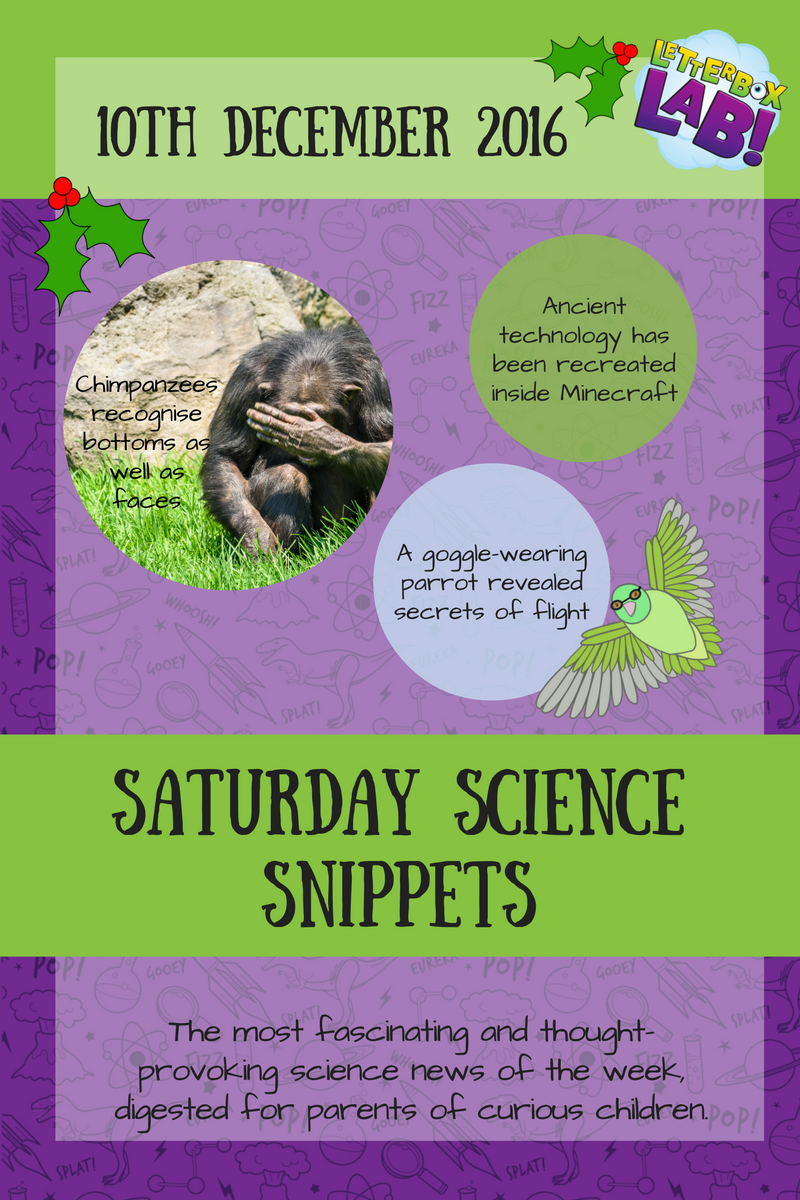Chimpanzees recognise bottoms as well as faces
Being able to tell friend from foe by their face has been so important to us that we have evolved an incredible ability to recognise faces. The way we recognise faces involves dedicated brain processes that are very different to how we recognise other objects such as forks or people’s bottoms. However, our closest relatives, chimpanzees, seem to use the same brain processes to recognise each other’s rear ends as they do for each other’s faces, giving them a great ability to tell each other apart from behind.
The Netherlands-based researchers who have reported this in a publication called “Getting to the Bottom of Face Processing” have even suggested that our powerful ability to recognise faces started off as rump recognition. Over time our attention shifted upwards to the face. If it hadn’t, imagine how different our clothing would have to be.
Read more here.
Ancient technology has been recreated inside Minecraft
If you were a kid in the late 70s or early 80s you might have coveted the revolution in home gaming that was the Atari 2600. With its beautiful 128 colour pallette, a whopping 8 bit processor and games such as Asteroids, Space Invaders and Pac Man, it sold millions and although not the first video game console it is regarded the granddaddy of the industry.
Meanwhile, if you’ve ever played Minecraft you may have struggled to get much further than punching a tree. Well, someone has punched so many trees that they’ve managed to build an Atari 2600 inside Minecraft! A computer game console now exists inside a computer game. How far will this go? Will nostalgia one day drive us to recreate the joys of Windows Vista inside a game?
Read more here.
A goggle-wearing parrot revealed secrets of flight
Birds are really good at flying, and figuring out exactly how they are so good at flying will help us build better flying machines of our own. Key to this is understand how the air moves around a bird’s wings when they are in flight. Researchers at Stanford University wanted to employ a brilliant method for making careful measurements of airflow around birds’ wings. Their plan was to disperse fine particles into the air in their observation room and blast the particles with a sheet of laser light. Then when a bird flew through the room disturbing the particles, the laser light would show up exactly how the air was moving.All good then, except that the lasers could blind the bird, which the researchers obviously didn’t want. Luckily, they came up with a rather adorable solution: they made the bird a tiny little pair of laser safety goggles. Thanks to this 3D printed protective gear they are discovering more about how these animals actually fly.
Read more here and watch the goggled parrot fly in the video below!




Add Comment